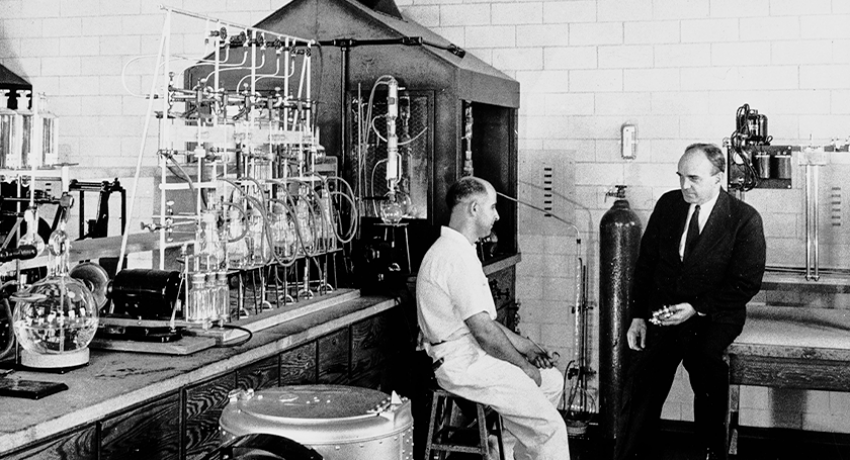Whitmore, a world-class organic chemist
Frank C. (Rocky) Whitmore (1887-1947) was a leading international authority on the field of organic chemistry, especially hydrocarbon chemistry and molecular rearrangements. In 1932, he developed the concept of carbocations, molecules with positively charged carbon atoms, with his later research providing the first explanation of carbocation rearrangements. In 1929 he was appointed Dean of the School of Chemistry and Physics at Penn State. As Dean, Whitmore attracted several prominent scientists to Penn State, including Russell Marker and Merrell Fenske.
In 1938, Whitmore was awarded the William H. Nichols Medal for
outstanding chemical work. The American Chemical Society elected him president in 1938. He was awarded the highest chemical honor in the nation, the Willard Gibbs Medal, in 1945. During World War II he worked on super-explosives, the synthesis of anti-malarials, and the production of penicillin. In addition to publishing more than 200 scientific and technical papers, he was the author of two books, Organic Compounds of Mercury (1921) and Organic Chemistry (1937). In 1953, Penn State named the Whitmore Laboratory after him. (Adapted from Biographical Note in the Frank C. Whitmore Papers)

